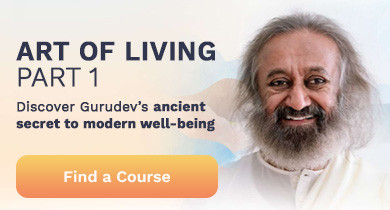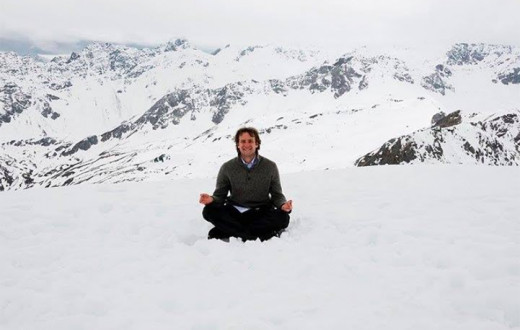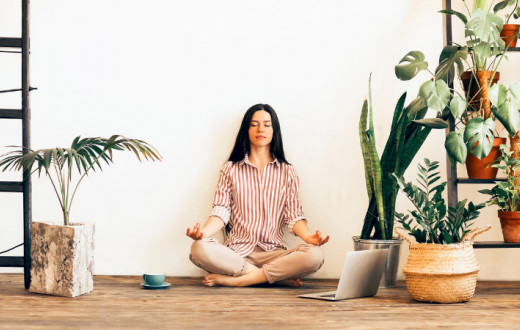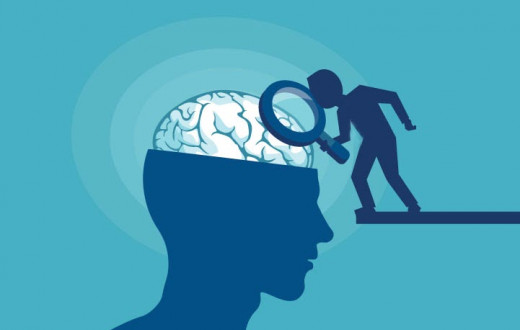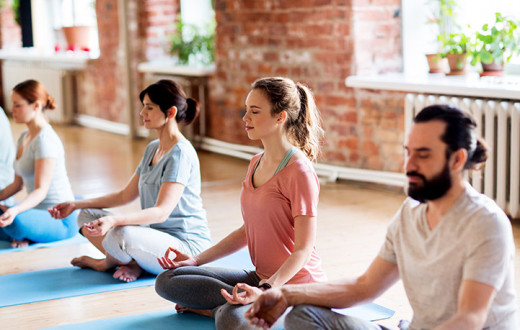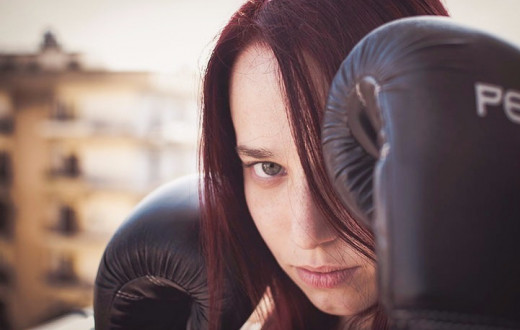
While forms of meditation may differ, the physical positions meditators assume often don't. A meditator sits in a relaxed yet alert way. This prevents sleep from overtaking them and keeps distractions and pain away.
If you meditate regularly, you have plenty of chances to tweak your meditation posture. You want to give yourself the best opportunity for mental renewal and stress relief. Exploring and experimenting with meditation positions will give you self-knowledge.
Meditation cushions and chairs are plentiful in many different varieties of styles. But the most important equipment for meditating is your own body-mind complex. So, start by asking yourself what meditation positions will make you feel at peace and joyful in your life.
What to ask yourself about meditation posture
Questions may enter your mind about how to sit when you begin a meditation practice. This is natural and normal for beginners.
The best meditation posture makes you feel relaxed while also feeling alert, comfortable, and awake. You don’t want the distractions that discomfort brings, and you also don’t want to fall asleep from too much comfort. A happy medium, that’s painless yet attentive, is best.
How to get into position for meditation
Use your positioning to do the following.
1. Set intentions
Commit to the allotted time and a regular daily practice
Recommitment to your daily and ongoing practice will help you let go of self-judgment if you miss a day
The constant renewal of intentions will give you a peaceful state of mind
2. Let go of effort
The mind needs to renew itself
Trying to relax uses up your mental energy
Allow your mind and body to relax without effort
3. Stop physical distractions by keeping your body comfortable
Some people are comfortable lying down, walking, or standing. But these potential meditation positions bring fewer benefits than a sitting meditation position. In sitting meditation, you stay alert and avoid distractions. When lying down you may fall asleep. When walking you may find your mind too active and distracted by your surroundings
Positions other than sitting are usually used during specific types of meditations. Yoga Nidra, or yogic sleep, done lying down, is one example. Walking a labyrinth is one example of a special walking meditation
Explore the different responses of your body by trying different meditation positions
What positions are ideal for meditation?
In each of the following seated yoga postures it’s a good idea to reflect before you meditate. These preparatory moments are for double-checking important aspects of your sitting position. These aspects include how you're sitting, your spine, hands, shoulders, chin, jaw, and gaze.
How you’re sitting: Here are three of the best sitting positions for meditation.
Sukhasana (Cross-legged position) is flat on the floor or the front edge of the cushion. You can use the 45-degree angle of the cushion to create a natural arch in the lower back and keep the chest open. This is also known as the Burmese position. Both feet are on the floor. The knees bend but the legs don't have to cross.
Variation for back pain: The quarter-lotus position allows you to sit with your legs crossed without strain. Simply place one foot on the opposite calf. Your feet stay below the height of your thighs, helping to avoid pins and needles.
Variation for knee pain: Straighten your knees and extend the legs out in front of you.
Padmasana (Lotus pose) is flat on the floor or the front edge of the cushion. But the feet and ankles are on top of the thighs instead of on the floor.
Variation for back pain. Half-lotus keeps one leg on the opposite thigh at a time, instead of both legs at the same time. It helps to relieve any strain on the back in this sitting pose.
Variation for knee pain. Place a blanket or block under the knee of the top-crossed leg. Half-lotus also relieves strain on the knees that you may get during full-lotus position.
Vajrasana (Thunderbolt pose) is a kneeling position. You can sit in the cavity created by your feet. Avoid sitting on top of your heels.
Variation for back pain. Use a cushion on its side, a meditation stool under your sitting bones, or yoga props between your legs. This can keep the hips above the knees so the pelvis and spine stay neutral.
Variation for knee pain. Use a chair or a small meditation stool to keep your weight off your knees.
Your spine: In the foundation of your sitting position you can use your spine to uplift your whole being. Each vertebra should stack up like a tower of coins. The spinal column can feel like an arrow or a straight rod that runs from the top of your head to the base of your spine. These visualizations can help you check in with yourself about your spinal posture.
Your hands: Rest your hands on the tops of your thighs. When the palms face upwards, it will help you relax your breath. Many positions for the hands exist in yoga to create different positive effects. In Sanskrit, a hand position is a mudra. These positions, or mudras, can be part of an advanced meditation practice. As a beginner it's enough to keep your hands still and neutral, flat on the tops of your upper legs.
Your shoulders: Keep your shoulder and back muscles soft. The back is solid, though. The shoulders should be a little bit back. You can roll your shoulders back to achieve this. The front of your body will open up, exposing your heart area.
Your chin: Tuck in your chin a little bit. Don't look down, but don't wear out your neck keeping your chin out and head up.
Your jaw: The jaw can hang open. The face muscles can relax. The tongue can be against the roof of your mouth for easy breathing.
Your gaze: Rest your gaze and keep it loose and unfocused. Sometimes a guided meditation will call for open eyes. Some will call for closed eyes. Follow the instructions of your guide or meditation teacher.
Meditation positions for bad backs and bad knees
For bad backs:
Keep the pelvis in a neutral position to help your spine stay neutral
Keep the thighs at a 125 to 135-degree angle to your hip sockets with a cushion that supports your lower back
For bad knees:
Sitting: Use a meditation cushion, bench, or chair. Extend your legs out in front of you
Crook lying: For pain relief after meditating use a bed to avoid getting up and down from the floor. Lie on your back with your knees bent at 90 degrees and hips, ankles, and knees aligned with the spine. The soles of the feet rest on the bed, also in alignment. However, this would not be an ideal position for meditation, since it would lead to sleep.
Want to learn more about how to meditate? Click here.
For more ways to meditate that are relaxing and comfortable, check out our FREE breath and meditation online session with a live instructor. You’ll start to learn about SKY Breath Meditation. It has helped millions of people around the world.

